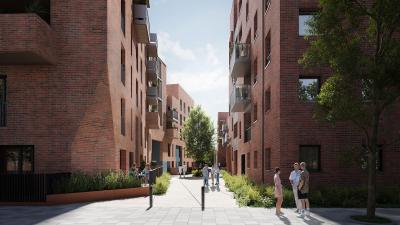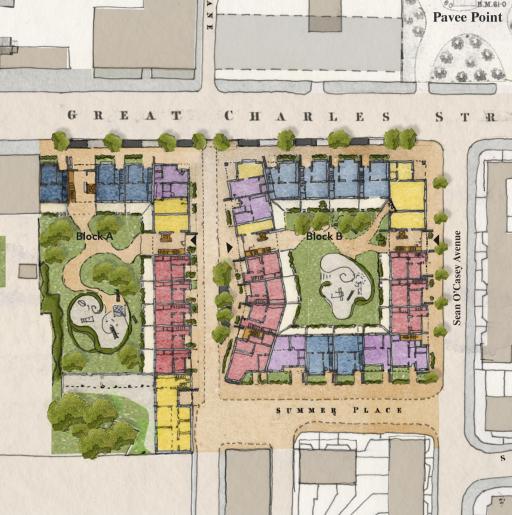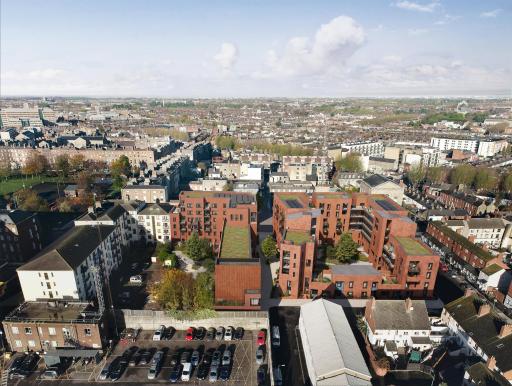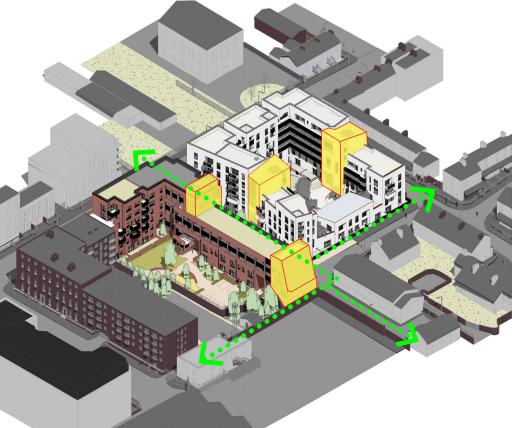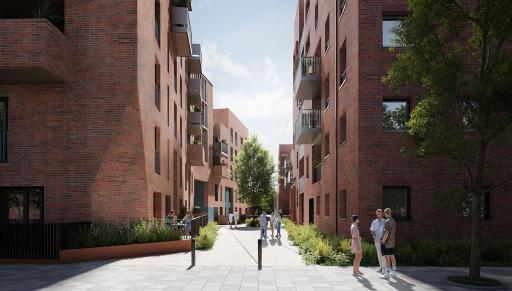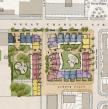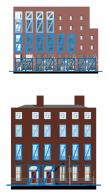Matt Talbot Court forms part of Dublin City Council’s Estate Renewals programme. This collaborative project with O’Donnell + Tuomey Architects will replace three 1960s apartments blocks with two new buildings, repairing a fractured part of Dublin’s Georgian Streetscape and reinstating the line of a lost historic street through the site.
Located in the North Georgian Quarter, half of the site area falls within the Mountjoy Square Architectural Conservation Area. The design responds to the scale and form of the historic and newly developing context to preserve and enhance the character of the area, which until the 1900’s, was considered among the best places to live in the city.
The two new buildings (buildings A and B) are arranged around communal gardens shared by the residents of each cluster. This configuration re-establishes a coherent urban structure of defined street frontages and thresholds. A new landscaped pedestrian-priority lane between the clusters provides access to both residential courtyards and improves connectivity and permeability within the public realm.
Building A, designed by Proctor & Matthews Architects, within the O’Donnell + Tuomey masterplan, is configured as an L-shape and provides 38 one-to-three-bedroom apartments and maisonettes (with 92 homes provided overall). To the north, both the massing and elevations reference the formal Georgian character of Great Charles Street, establishing a strong civic presence. Upper levels access galleries and threshold spaces to ground floor duplexes are screened behind a formal colonnade. This acts as a threshold device between the busy street and the residential accommodation within. Street level entrances are celebrated with pre-cast concrete portals (a reference to the celebrated Georgian architectural doorways), providing a clear demarcation between the private amenity spaces and street level dwelling frontages.
As the building ‘turns the corner’ from Great Charles Street and faces the new pedestrian route, it adopts a more informal domestic architectural language. Balconies - partially projecting and partially recessed – encourage engagement with the pedestrian path while providing shelter from the elements.
To the south, the streetscape is terminated with a more sculptural element within the composition formed by an upper floor duplex dwelling with steep pitching roof, acting as marker for the termination to several public routes.
A secure south facing landscaped courtyard provides a place for residents to meet and children to play, helping to nurture a sense of community.
Flexible dual aspect apartments have been designed to enhance people’s everyday lives, maximising daylight and views. All dwellings have generous private amenity space provided in the form of a terrace or balcony.
The materiality of both buildings takes inspiration from the warm red brick hues in the surrounding neighbourhood and conservation area. Pigmented concrete frames signal the main entrance to the cluster and adopt the colour of the adjacent brickwork.
